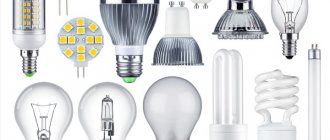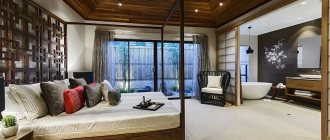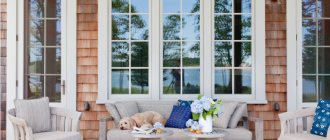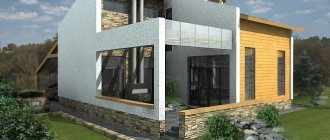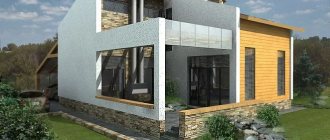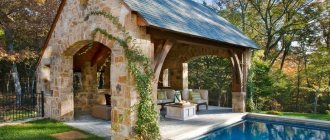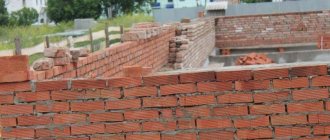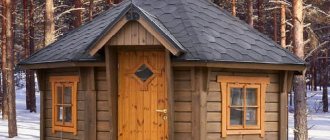A greenhouse is traditionally considered an economic, purely functional building that cannot be hidden behind a fence or covered with ivy just because it requires maximum lighting. To prevent the desire to hide it, you can come up with an original design for the greenhouse and turn it into an expressive element of the site. We figure out what possibilities exist for this, compare materials and forms.
Small greenhouse on a hill Source pinimg.com
What you need to know about greenhouses
Purpose
Like a greenhouse, a greenhouse is used to create a favorable microclimate when preparing seedlings or when fully growing tomatoes, cucumbers, cabbage and other plants.
In a broad sense, both structures are perceived as the same thing, although in fact a greenhouse is a small and unheated structure. A greenhouse is a larger building with a heating and ventilation system, which allows for the cultivation of many crops at any time of the year.
Design
The structure of greenhouses is quite simple. A frame is assembled from pipes, metal or wood, which is covered with film, polycarbonate, glass, acrylic and other light-penetrating materials. If the weight of the structure is very large, it is additionally installed on the foundation.
For ventilation, removable panels or opening transoms are provided. Heating is carried out using water heating with radiators, infrared heaters or hot air from heat sources outside the greenhouse.
Installation
Since sunlight is vital for plants, the greenhouse should be built on the south side. It is advisable to place it on a slope and closer to other buildings in order to protect it from the wind and have access to utilities. It is better to stay away from high fences and trees: they provide shade, and falling leaves reduce light transmission.
Heating in a greenhouse
A heating system is necessary mainly for winter-type greenhouses. The following types of greenhouse heating can be distinguished:
- using electrical equipment using air heaters and electric heaters. For cost-effectiveness, solar vacuum collectors are installed;
- air equipment is a ventilation system through which air flows evenly into the greenhouse, protecting plantings from thermal burns. Such a system is installed together with the greenhouse structure;
- infrared radiation is evenly distributed throughout the greenhouse, reducing heat loss. Is a profitable alternative to electricity;
- a gas generator supplies warm air to a specific part of the greenhouse.
How to make a greenhouse with your own hands from agrofibre and reinforcement
youtube.com
- Assembly complexity: low.
- Foundation: not required.
- Cost: low.
- Variations: the frame can be replaced with plastic pipes, and the covering material with film.
The simplest design option, which is ideal for a small greenhouse. A frame made of reinforcement is installed directly on the bed, and agrofibre or, as it is also called, spunbond, is stretched over it. This material protects from the sun while retaining heat and moisture.
1. The dimensions of such a greenhouse are chosen arbitrarily, depending on the footage of available materials. For example, it is convenient to cut six-meter reinforcement in half. With such a length of arcs, the width of the greenhouse is about 80 cm. The arcs themselves should be installed in increments of 1.2–1.5 m.
teplica-exp.ru
2. Arcs are bent from reinforcement with a diameter of 8 mm. Next, drip irrigation tubes or an old hose are put on them, leaving 10–20 cm at each end so that it is convenient to insert the structure into the ground.
ebayimg.com
3. After marking the installation locations for the arcs, scraps of steel pipes or drilled wooden pegs 20–30 cm long are driven into the ground, and the reinforcement is inserted into them.
stopdacha.ru
4. Spunbond can be stitched on a sewing machine, forming pocket folds that fit directly onto the arches. Another option is to install plastic pipe guides on the sides of the beds and attach agrofibre to them using purchased clips or cut pieces of pipes. The covering material can eventually be easily lifted by simply removing them.
stblizko.ru
5. If desired, you can attach the arcs not to pipes driven into the ground, but to metal guides rigidly fixed at the edges of the base. This design will allow you to fold the greenhouse like an accordion, simply by moving the arcs.
must.kz
6. The free ends of the spunbond at the ends must be collected, tied in a knot and secured with a peg, earth or other means.
samara.kinplast.ru
Here are step-by-step video instructions.
Key rules for arrangement
Effective cultivation of fruit crops requires knowledge of how to arrange the inside of a greenhouse. The main goal at this stage is to create the most comfortable conditions for the growth of the plants that you plan to plant. First of all you will need:
- Create beds and place shelving.
- Organize the maintenance of optimal temperature conditions.
- Solve the problem of lighting that is beneficial for plants.
- Set aside a small space for a quarantine area.
- Create (apply) fertile soil.
- Decide on the surface and lay out the paths.
- Consider a design for shading the southern part.
- If necessary, install a drip irrigation system.
Dividing the internal space of a greenhouse Source vogorode.com
Important! Let us remind you that each of the listed points is selected taking into account the characteristics of the crops that you plan to grow. For example, growing vegetables requires organizing beds. For seedlings or plants growing in pots, shelving is needed.
How to make a greenhouse with your own hands from masonry mesh and film
dachadecor.com
- Assembly complexity: low.
- Foundation: not required.
- Cost: low.
- Variations: instead of film, you can use agrofibre, and make the door on a wooden frame.
A budget option for a greenhouse made from masonry mesh and regular film, which is quickly assembled and has a number of advantages. The design does not require a foundation; due to its elasticity, it is resistant to wind loads, and is also convenient for tying up plants from the inside. At the same time, by folding the mesh, you can get different sizes depending on your needs.
- Wooden beams, steel angles, pipes or channels are used as load-bearing posts. They are hammered at a distance of 1.2–1.4 m.
- The greenhouse arch is formed from two pieces of mesh laid overlapping. From below it is attached with wire to the posts, and from above it is fastened together with the same wire or plastic ties.
- To strengthen the structure, T-shaped supports made of wooden beams 50 × 50 mm are installed in the middle of the passage. If desired, they can also be driven into the ground.
- A film is put on a dome assembled from a mesh, which is held in place by strings of twine or rope stretched over it.
- The side walls are also made of film, which is folded up and attached to the dome with tape. In several places at the top and bottom, small windows are cut for ventilation of the greenhouse.
- The door is made on a wooden frame or made from the same film, which is cut and attached to the side wall with magnets in the manner of door mosquito nets.
Location on the site
Before you move on to building a greenhouse, you need to decide on its location. Especially if it is stationary and not portable. The choice of location determines the size, shape, and amount of material consumed.
When choosing an area for a greenhouse, you need to consider the following:
- Pre-level the area. The structure cannot be installed on a slope. When there are stumps, snags and other obstacles, they will need to be removed before constructing the greenhouse.
- Crops need sunlight. Therefore, you cannot build a warm shelter in the shade. This will adversely affect the development of seedlings and further fruiting.
- Agrotechnical work will need to be carried out in the greenhouse. Therefore, it is necessary that it is easy to reach with equipment so that it opens easily.
- It is recommended to build the structure from east to west. Thanks to this, the plants will receive maximum sunlight. When it is necessary that this occurs only in the morning and evening, the structures must be installed in a north-south direction. This will provide protection from the midday sun.
- If you plan to constantly grow tomatoes or cucumbers in a greenhouse, it is recommended to install another one nearby. This is due to the fact that these crops need to be replanted annually in a new location. Thanks to the presence of a second greenhouse, crops can be swapped every year. When there is no space for so many structures, you can create mini versions of them.
Helpful information! It is best to start construction in mid-spring. There is no more snow, and the plants have not yet had time to reach full growth. You can, of course, build greenhouses any time you want, except in winter (the work will be complicated by severe cold and frozen soil).
How to make a greenhouse with your own hands from stretch film with a wooden frame
stroydachusam.ru
- Assembly difficulty: average.
- Foundation: not required.
- Cost: low.
Another way to quickly build a greenhouse. A wooden beam is used as a frame, and stretch packaging film is used as a covering material. With a large number of layers, it transmits light a little worse than ordinary PVC film, but on hot days this is even a plus.
- The film is sold in rolls, so the dimensions of the greenhouse are selected according to the cutting of the timber and taking into account your wishes.
- For the base, steel corners 40 × 40 mm are used, in which holes for attaching the frame posts are pre-drilled. They can also be treated with bitumen or painted to extend their service life.
- The corners are driven into the ground, and pieces of timber are screwed to them with self-tapping screws. A lower frame, in turn, is attached to the beam, on which the side walls and roof are assembled. All corners are reinforced with additional inclined sections of timber.
- The door is assembled on a wooden frame in one of the side walls and installed on hinges.
- Film wrapping is done in parts, in several layers and overlapping. First, the gables are installed, then the roof slopes, and only then the walls. You need to start wrapping them from the bottom so that running rainwater does not get inside the greenhouse.
- After wrapping with glazing bead or river, the door and its outer contour of the door are trimmed, and then the film around the frame is cut through. In the same way you can make a window in the opposite wall.
Drip irrigation system
The arrangement of a greenhouse inside without a drip irrigation system can be called unfinished. This irrigation principle moistens the soil directly next to the root of the plant, without wetting the paths and aisles. The peculiarity of the method is that wetting is carried out constantly and evenly, which significantly reduces water consumption and has a beneficial effect on plant growth.
Water distribution is carried out through a supply line connected to a volumetric tank or the main branch of the water supply system. At the design stage, you need to decide on the places where the plants will grow, since the supply of liquid must be organized directly under each root.
Drip irrigation system for a greenhouse Source stopdacha.ru
It can be presented in one of the following ways:
- Installing or assembling drip tape is one of the simplest options. It operates on the principle of gravity flow or connection to a main line with a pressure of no more than 1.5 Bar.
- Automated drip irrigation system with connection to a water supply branch. A magnetic valve with an autonomous controller responsible for the irrigation intensity is embedded in the pipe.
- The main line is made of metal or plastic pipes, and sometimes a watering hose. The best option would be HDPE or PVC, as they have a reasonable price, are durable and do not form deposits on the internal walls. A watering hose may be accidentally damaged by a garden tool; rust will form on the metal, which will eventually clog the drip nozzles.
Interesting! The simplest, oldest and no less effective method of drip irrigation is a bottle of water buried in the soil and turned upside down. A plug that is not screwed all the way allows water to drain, thereby irrigating the area near the plant.
How to make a greenhouse with your own hands from old window frames
teplica-piter.ru
- Assembly difficulty: average.
- Foundation: desirable.
- Cost: minimal.
- Variations: you can combine frames with film to make a roof, side walls or doors.
The main advantage of this design is its low cost. Old window frames can be found, if not free, then for a nominal price. In addition, glass transmits light much better than film and polycarbonate. The windows already have vents for ventilation, and if you select a balcony block, you will also have a ready-made door.
- The size of the greenhouse depends on the size of the frames and the interior space you need. Aim for a width of about 2.5 m to give a passage of about 60 cm and two beds of 80–90 cm.
- Windows and glass have considerable weight, so it is advisable to install them on a solid base. This can be a shallow strip foundation, a massive wooden beam or a metal profile.
- A wooden frame or pillars are installed on the foundation at the corners, and frames are attached to them and to each other. The gaps between each block are covered with putty and clogged with strips of laminate backing or a thin wooden strip.
- A door is made in the front wall. Its role can be played by one of the windows, a balcony door or a wooden frame covered with film. Ventilation is provided through window vents.
- To reduce weight, it is better to make the roof from wooden beams and film. You can use the same window frames, but in this case you will have to reinforce the structure with supports in the middle of the passage so that it can withstand a lot of weight.
How to make arcs for a greenhouse
Arcs, the main component of the greenhouse frame, can be purchased at any hardware store. Many people do this, but not everyone is satisfied with the finished products. And it’s simple - it’s a pity to spend money on something you can do with your own hands.
The arcs for the greenhouse-breadbox can be bent yourself from a metal profile.
A member of our portal with the nickname enycha made a bending machine specifically to build a greenhouse. It took him one day to make the unit.
EnychaFORUMHOUSE Member
The machine was made for a specific task: to make a couple of such greenhouses. Accordingly, the pipe is only one size - 20x20 mm. The amount of health required for bending is inversely proportional to the bending radius. The smaller the radius, the more health required. It is necessary to bend in several passes; An attempt to bend immediately with a minimum radius leads to bends in the pipe.
The article on the forumhouse describes in detail how to make pipe benders of varying complexity with your own hands: from very simple to almost professional.
For simpler greenhouse designs, you can:
— Buy very inexpensive duralumin tubes with a diameter of 10 mm, 2 or 3 m long at a home and garden store and bend them to the desired radius.
- From a 2 meter long tube you can bend an arc into half a circle with a radius of 635 mm (for a bed 127 cm wide.
- From a tube 3 meters wide, make an arc of half a circle with a radius of 955 mm, cover a bed 1910 mm wide.
- Bend the pipe into an ellipse and get a higher and narrower arc.
— Make arcs from 10mm wire (sold in rings, diameter 3.5 m, very inexpensive).
OPrizFORUMHOUSE Member
I cut it in half with a grinder, and the arcs are ready. I pull the ropes well along the top and sides, with a film on top.
— Use metal-plastic pipes from the water supply. They bend easily, do not rust, do not rot, and are always white and clean. The downside is that metal-plastic is not elastic, and if you lean your elbows on the greenhouse, the pipe will remain crooked.
GeobuilderFORUMHOUSE Member
I bought 50 m of HDPE pipe 20 mm (600 RUR) and 18 m of fittings 12 mm (700 RUR), it turned out very cool!
— Use fiberglass reinforcement: lightweight, mobile, convenient.
MokhovichokFORUMHOUSE Member
You pull the reinforcement out of the beds, it straightens and you store it like ordinary poles.
How to make a greenhouse with your own hands from film and polypropylene pipes
maja-dacha.ru
- Assembly difficulty: average.
- Foundation: not required.
- Cost: low.
- Variations: the film can be replaced with agrofibre or polycarbonate
A greenhouse made of polypropylene pipes attracts with its simplicity, reliability and low price. The materials are sold at any hardware store, and assembly does not require any special skills or tools. You can even do without a soldering iron if you connect the pipes not with fittings, but with through bolts.
- As always, sizes are selected based on needs and available materials. Polypropylene pipe is usually sold in 4 m sections, and it is easy to cut and splice using couplings.
- The first step is to calculate the length of the pipe and the number of fittings required. It’s better to take it with a reserve so that you don’t have to run to the store later.
- The main parts are soldered from pipes, tees and crosspieces - arches with crossbars and longitudinal inserts.
- Next, the greenhouse is assembled from the prepared parts. If a soldering iron is not at hand, you can use bolts with nuts and washers to connect, which are inserted into pipes drilled through.
- The film is secured to the edges of the frame using purchased pipe clamps or homemade clips made from slightly larger diameter pipes cut along sections.
Form, design and additions
A greenhouse can become an important design detail of a site. Its shape is chosen based on the general style of the site. For fans of traditional solutions, a greenhouse in the style of the Victorian era or a Gothic cathedral is suitable. It is important to consider the garden environment around the greenhouse; the design should repeat the shape, color and scale of the glazing. Vertical lines can be emphasized with the help of a decorative fence, trellis, or thuja planted nearby.
Next to the greenhouse Source spetspark.ru
How to make a greenhouse with your own hands from film with a wooden frame
legkovmeste.ru
- Assembly difficulty: average.
- Foundation: not required.
- Cost: low.
- Variations: the film can be replaced with agrofibre or polycarbonate.
A classic version of a greenhouse, used for decades and not losing popularity. Wooden beams are easy to process, have low weight and sufficient strength, and also retain heat well. The structure does not require a capital foundation - you can get by with a frame made of timber of a larger cross-section or use steel corners as a base.
- The standard cutting of timber is 6 m, so they start from this figure. Most often, greenhouses are made 3 × 6 m, but if desired, the dimensions can be either reduced or increased. The finished project with material calculations is available at this link.
- The assembly of the frame is the same as for a greenhouse made of stretch film. Steel corners are driven into the ground at intervals of about 1 m at the points where the posts are attached. In each of them, two holes are drilled for self-tapping screws or one for M8 or M10 bolts.
- Vertical posts are fixed to the corners along the entire perimeter, which are tied with an upper contour made of timber. To add rigidity in the corners, one jib is added on each side
- Triangular roof trusses are installed and secured opposite the racks. The slope angle is selected depending on the snow load. So, if there is a lot of snow in your region, the angle of inclination should be greater (the roof is higher and sharper).
- The door and window for ventilation are assembled on wooden frames and installed in the front and rear walls, respectively.
- At the end, the frame is covered with film, which is attached to the beam using a lath stuffed on top. All sharp parts on the wood are rounded off or covered with a soft material so that the film does not tear during operation.
Types of greenhouses
Not only the design, shape and material used for covering allow us to talk about the types of greenhouses. Their location and main purpose also make it possible to distinguish several types.
Seedling greenhouses have a small height, due to which they are able to retain heat well during frosts. In such greenhouses you can grow seedlings right away, without going through the stage of using cups where the seeds are planted.
In addition, in a greenhouse, plants receive a kind of hardening, subsequently having greater endurance compared to home ones. A seedling greenhouse can accept and grow any type of vegetables, herbs and even flowers. It makes a good greenhouse for a summer residence.
Home greenhouses are built on balconies or window sills and do an excellent job of growing a full-fledged crop. True, it is necessary to select varieties of vegetables and herbs that are adapted to grow indoors (cherry tomatoes, cucumbers, onions, etc.). By thinking through a multi-tiered design, you can save a lot of space.
Mobile greenhouses have an advantage over stationary ones, since they can be moved around the site as needed (for example, to free up space, or to expose the structure to the sun's rays). At the end of the season, the greenhouse can be easily removed from the area, saving space.
Small greenhouses make it possible to work with a small number of seedlings. The structure can be disassembled, thereby changing the size of the bed.
How to make a polycarbonate greenhouse with a metal frame with your own hands
- Assembly difficulty: high.
- Foundation: required.
- Cost: high.
- Variations: the foundation can be made of wooden beams or use steel reinforcement, angle or pipes driven into the ground.
The most popular and modern version of the greenhouse. This design is much more expensive than others and is difficult to manufacture, but it will last for decades. Polycarbonate can withstand the open sun for 10–12 years, and the frame made of a profile steel pipe is almost eternal.
1. The standard size of polycarbonate is 2,100 × 6,000 mm, so it is convenient to cut it into four or two parts with dimensions of 2.1 × 1.5 m or 2.1 × 3 m, respectively. Such pieces will be optimal for a greenhouse measuring 3 × 6 meters.
2. For reliable fastening and distribution of wind loads, a foundation is made under the greenhouse. This can be a shallow strip foundation, a frame made of antiseptic-treated wooden beams, or steel corners driven into the ground.
YouTube channel of Evgeniy Kolomakin
3. The design of the greenhouse consists of an arch, which is formed using arcs from a profiled steel pipe 20 × 20 mm, located at a distance of one meter from each other.
4. The arcs are fastened together by longitudinal sections from the same pipe, which are connected by welding.
5. A door is installed at the front end: a frame measuring 1.85 × 1 m is welded from a pipe, which is attached to the frame on hinges. A window for ventilation measuring 1 × 1 m is made according to the same principle and is located at the rear end.
6. Covering with polycarbonate begins from the ends. The sheet is cut in half, attached to the profile using special self-tapping screws with thermal washers, and then trimmed along the contour of the arc with a sharp knife. After this, the side wall sheets are installed.
Types of greenhouses and step-by-step instructions for their manufacture
The best projects are automatic types of buildings based on Arduino. They have an actuator (linear drive) to automatically open the door and ventilate. Of course, it could also be a simple thermal drive.
But in general, such greenhouses are equipped with everything necessary for autonomous operation. It will be very difficult to do this yourself. There are other ready-made greenhouse projects.
We offer you several homemade options with step-by-step instructions.
Arched (semicircular) greenhouse
You need to act step by step.
Drawings of arched greenhouses
Draw a drawing. Here are examples of drawings of an arched greenhouse:
Foundation
Beginning of construction - erection of the foundation. For this use:
- wooden beams - placed at a distance of 120-140cm, for a frame made of polypropylene pipes;
- tape - done if the frame is made of heavy materials.
The reinforcement frame needs supports so as not to touch the bottom of the trench
Frame
Next, build an arch from:
- masonry mesh, which is attached to the posts at the bottom and tied at the top;
- plastic pipes - welded or connected with couplings, adapters;
- steel professional pipe 2x2 cm - leave a distance of 100 cm, the arcs are fastened by welding;
- fiberglass reinforcement (diameter 8-12 mm) – easy to install.
Coating
The selected material is attached to the erected frame:
- film or spunboard - must be secured on top with twine or rope;
- polycarbonate - the cut sheet is secured using special self-tapping screws with thermal washers.
additional information
Door:
- film - made with magnets (like a mosquito net);
- wooden frame;
- metal pipe - mounted on hinges.
Windows for ventilation:
- in the film - holes are cut, any location is possible;
- wooden frame - can be opposite the door, in the roof, side walls:
- in a metal frame - a welded frame from a corner, placed opposite the door or in the roof, or in the sides, depending on the design of the greenhouse.
All these options are wind-resistant and convenient for tying up plants. It is possible to make greenhouses of any size (mini for seedlings, small, large). Film ones are a cheap option; they are used in the industrial production of vegetables and in dacha farming (it’s good to grow tomatoes and cucumbers).
The most expensive and labor-intensive option is a metal arch frame and polycarbonate, but such a greenhouse will last longer and looks more aesthetically pleasing.
Examples of creating various arched greenhouses
House-shaped greenhouse
Another very popular roof shape is gable.
Drawings of a greenhouse-house
Foundation
The need for a foundation depends on the weight of the frame. If it is light, then they do not make a capital base, but use:
- Steel corners 4x4 cm, driven into the ground - holes are first made to attach the frame posts, painted or filled with bitumen.
- Wooden blocks - the structure usually has a size of 3x6 m.
Frame
- Beam - fasten the bottom frame, sides, roof. The corners are given rigidity with additional segments. The sharp parts are rounded and wrapped in soft material.
- Galvanized profile - assembled from ribs and tied together.
- Plastic polypropylene pipe, connected with fittings and adapters.
- Profile made of plasterboard - does not require additional processing and is easy to bend.
Covering material
- Stretch film (like food film, but thicker) - wrap the frame in several layers, overlapping. They start with the gables, then the rest. Move from bottom to top to prevent rain from getting inside.
- Film or agrofibre - wrapped or glued.
- Polycarbonate - secured with special self-tapping screws with heat washers.
- Glass, as a rule, double-glazed windows are used for homemade greenhouses.
additional information
The door is on hinges in the side wall. The film is wrapped, covered with glazing bead or lath and cut through. The window is made similarly to the door. A heavy frame made of frames or metal will require a foundation. Usually they make a tape one.
Step-by-step instructions for making a greenhouse-house
- Old window frames (almost a free option) - their size determines the size of the greenhouse. Attached to frame or posts. The cracks are covered or clogged.
- The door is made using one of the frames or a balcony door is used. The windows will provide ventilation. It is better to stretch the film on the roof - the weight of the building is less. If you use frames for the roof, you need to strengthen the structure by placing supports.
- Metal frame - attached to bolts installed in the foundation before pouring. A frame is made from a channel or a double corner, racks (1.6-1.8 m) are welded to it and fastened together with segments. The roof is connected to the racks, and at the top - to the beam. A window is made in the roof or opposite the door.
The glass is inserted into frames formed by double corners. To improve thermal insulation, double-glazed windows are used.
A structure made of glass and metal is an expensive and labor-intensive option, but durable. You can build different types of greenhouses by combining the materials that are available.
Examples of creating greenhouse-houses
Dome greenhouse
It consists of triangles and hexagons. A foundation is required. This is a rather complex project - heavy assembly, high cost, labor-intensive calculations.
The advantage is strength + such a greenhouse transmits light well.
The frame is made of wood, profiles or pipes, covered with film, glass or polycarbonate is inserted.
Drawings of a domed greenhouse
They are built using the following technology:
- prepare triangles;
- fasten them with self-tapping screws, forming a dome;
- assembly starts from the bottom - you get the correct shape;
- the upper triangle is folding, provides ventilation;
- door - polygon or regular shape;
- the film is stretched after assembly, this provides an aesthetic appearance.
Examples of domed greenhouses
Greenhouse thermos
A thermos greenhouse (buried structure) will require a deep pit - about 200 cm. Its total height is 180 cm, width - 200-500 cm. A trench is dug along the edge of the bottom and walls are laid out. They provide a descent for installing stairs, pipes for air access, wall insulation, and waterproofing.
How to make a polycarbonate greenhouse with a galvanized profile frame with your own hands
techkomplect.ru
- Assembly difficulty: average.
- Foundation: not required.
- Cost: low.
A simpler and more affordable option for a polycarbonate greenhouse. It does not use expensive metal pipe that needs to be welded. And galvanized profiles for plasterboard systems are used as frame material. They are easily cut with metal scissors and fastened with ordinary self-tapping screws.
- When choosing sizes, as usual, we start from the parameters of polycarbonate sheets. Since the profiles lose rigidity when bent, it is better to choose a gable greenhouse rather than an arched one.
- By analogy with arches made of a metal pipe, a frame made of galvanized profile is assembled from ribs in the form of a house.
- The assembled modules are installed on a frame made of wooden beams and tied together with sections of profiles. Doors and a window for ventilation are made in the front and rear walls.
- At the end, the frame is sheathed with polycarbonate sheets, which are secured using special self-tapping screws with plastic thermal washers.
Basic rules for preparing greenhouses
For plants in autumn weather, it is necessary to organize suitable conditions for growth and relatively active fruiting.
Before the cold weather starts, you will have to do the following:
- Equip a winter greenhouse.
- Install all structural elements that provide watering, lighting, and high-quality heating.
- You will definitely need a ventilation mechanism.
- You also need to prepare several varieties of vegetables for later cultivation.
How to make a glass greenhouse with a metal frame with your own hands
juliana.ru
- Assembly difficulty: high.
- Foundation: required.
- Cost: high.
- Variations: to make the structure lighter, you can make the top from polycarbonate or film.
The most correct, but rather labor-intensive and expensive option for a greenhouse. The main advantage of glass is its excellent light transmittance and durability. However, due to the heavy weight of the structure, a strong metal frame and foundation are required. In addition to arranging a strip foundation, the difficulty also lies in the need to use welding.
- When it comes to choosing sizes, a glass greenhouse is no exception - everything is strictly individual and taking into account the available materials.
- The impressive weight of glass and metal frame requires a full foundation. Usually a trench 30 cm deep and 20 cm wide is dug around the perimeter, wooden formwork 20 cm high is installed on top and the whole thing is filled with concrete. Also, before pouring, anchor bolts are inserted into the formwork to secure the frame.
- A metal channel or corner is attached to the resulting base using anchors. Then racks 1.6–1.8 m high are welded to this frame from two folded corners 45 × 45 mm. At the top they are fastened with longitudinal sections of the corner.
- Next, rafters from the same double corners are placed on the resulting box. At the bottom they are welded to the posts, and at the top - to another corner, which acts as a ridge beam.
- A door is inserted into one of the walls, and a window is installed in the lid or wall for ventilation.
- The glass is installed in the frames obtained by using double corners and secured with homemade gluers - thin aluminum or steel plates bent in the shape of the letter Z. The gluer is attached to the corner with one hook, and to the glass with the second.
Foundation
The type of greenhouse chosen determines its foundation. First, markings are made - the sides form a right angle. For a seasonal structure, a wooden base made of timber (10x15 or 15x15 cm) treated with an antiseptic or water-repellent compound is suitable to last longer. Place it on the ground, but preferably on a cushion of compacted sand or on concrete slabs.
For a permanent building you will have to dig a pit. You can make a strip foundation - a trench 30x30 cm. Sand is poured onto the bottom, crushed stone on top (all 50-70 cm thick). They put up formwork from boards, lay roofing felt and fill it with concrete. It needs to be pierced with a shovel and knocked on top to remove the air. The base is raised above the ground by 20-50 cm. Support posts or pieces of metal corners are embedded in the foundation.
How to make a dome greenhouse with your own hands from film with a wooden frame
pinterest.com
- Assembly difficulty: high.
- Foundation: desirable.
- Cost: high.
- Variations: the film can be replaced with polycarbonate or glass, and the frame can be made of profiles or pipes.
A domed or geodesic greenhouse attracts primarily with its unusual appearance: it consists entirely of many triangles and hexagons. Other advantages include high structural strength and best light transmittance. The geodesic dome has only one drawback: it is difficult to manufacture.
- The dimensions of such a greenhouse are selected individually, based on the required area. Since the frame design is quite complex, calculations are the most time-consuming part of the project.
- In order not to get confused and take into account all the nuances, it is convenient to carry out the calculation using a special calculator. In it you can set the dimensions, select the “thickness” of the frame and get a list of all the necessary parts for assembly with dimensions, as well as their approximate cost.
- Regardless of its dimensions, a domed greenhouse is highly durable and is not afraid of winds, so there is no need to make a foundation for it. However, since the construction of a structure is very labor-intensive, it is rational to extend its service life and equip a lightweight strip foundation for attaching the frame.
- The ribs of the structure consist of triangles, which, in turn, are assembled from a wooden batten according to a template. First you need to prepare the required number of such triangles.
- The greenhouse is assembled like a magnetic construction set from childhood. Starting from the bottom, rows of triangles are assembled one after another, which are fastened together using self-tapping screws and form a dome. If everything is calculated correctly, it will close at the top and will be perfectly shaped.
- One of the triangles in the roof is made folding or removable to provide ventilation. The door is either installed in a polygon shape, or made in a traditional shape with a mortise frame.
- The film covers the finished dome or is stretched over each triangle at the assembly stage. In the first case, it will be easier to replace the film when it breaks. The second one gives a more aesthetic appearance. Which one to choose - decide for yourself.
Video description
The video shows a comparison of an attached and a free-standing greenhouse:
The advantage of this option is the reduction in material costs due to that very wall. It is important to attach the frame to its plane as much as possible, making the joining points strong and reliable.
As for materials, there are no restrictions here either. All of the products described above can be used to assemble a frame structure. And such a greenhouse can be covered with films, glass or polycarbonate.
Greenhouse attached to the wall of the house Source pinterest.com
What do you plan to grow in the warm weather?
Based on what crops are supposed to be grown and in what quantities, you should understand what size the greenhouse should be.
After all, greenhouses are divided into two types according to the mobility of the structure:
- Portable
- Stationary
This is a matter of taste, but installing a temporary greenhouse or building a portable one is much easier.
Once it has been possible to determine the planting area, as well as the expected height of the crops, we can judge the future dimensions. When this issue is resolved, it is worth considering the next point.
Types and general classification of greenhouse buildings
Modern manufacturers offer a variety of types of greenhouses, differing in certain characteristics and technical and operational parameters.
In order to choose the right project for self-construction, it is necessary to take into account the diversity of existing greenhouse designs and configurations.
Triangular greenhouse made of boards
This greenhouse is good for seedlings, but you can make it for peppers and eggplants. A stand is nailed in the middle of the base. There are two inclined boards attached to it. The cross section results in a triangle. If you need a long greenhouse, the same structure is installed approximately every meter. All tops are connected with a long bar or pipe. This greenhouse has a simple and convenient design.
Cucumbers are grown with it only until they begin to curl. Under the cucumbers, the covering material is removed, posts are nailed (screwed) to the sides, and twine is pulled between them.
Triangular greenhouse made of boards Here's how to remake such a greenhouse for cucumbers
Greenhouse “Breadbox” and “Butterfly” - photo
This design is called a “bread box” because it looks exactly like a plastic bread container. Its lid also rises upward, hiding behind the second half. If you look at the photo, you will understand everything.
You can weld such a greenhouse-breadbox with your own hands from a profile pipe
There are two types of such products: opening on one or both sides. If it is shallow, you can work with a lid that opens on one side. If the width is more than a meter, it will be easier to work if there is access from both sides. This design with two opening sides has its own name: “Snail”.
A film or spunbond is stretched over the manufactured frame, but polycarbonate is more popular for this design.
The second design differs in the type of door opening. Its vault is also made on arches, but opens on hinges upward (see picture).
Butterfly greenhouse: when open, the lids resemble wings
They can be installed directly on the ground or on a prepared foundation made of bricks or timber. In some cases, the lids do not open immediately from the ground, but there is a small side of 15-20 cm.
Read how to make a beautiful vegetable garden (decorative and functional) here.
What to cover
The main covering material for greenhouses and greenhouses is film. It is used on both small and large-sized structures. Glass was previously used for year-round use, but its high price and fragility led to the fact that it is used very rarely - the resulting shelter is expensive. And the large weight of the glazing requires a solid frame.
There are two new items. The more familiar polycarbonate, which is used for gazebos and canopies, and the relatively new one is spunbond non-woven covering material.
Now about everyone in more detail.
Film for greenhouses and greenhouses
Available in different polymers and different thicknesses. The most common are polyethylene and polyvinyl chloride. There are also reinforced ones.
Polyethylene films are the most inexpensive, but they are also the most short-lived. Even with the most careful treatment, they do not last more than a year: they become fragile under the influence of ultraviolet radiation, and the cold kills them. However, they are most often bought: cheap.
Available in sleeve form. By cutting it on one side, we get double width. There is no point in using uncut film: the service life will remain the same, but the consumption will be exactly twice as much. There is only one feature: the film breaks quickly along the fold. It is difficult and almost useless to seal it afterwards: the tape sticks very poorly to a dusty surface. Therefore, this fold is taped with tape before use. It turns out reliable.
Thickness and types
The optimal thickness of polyethylene film for summer cottages and greenhouses is 150 microns. If you take a thicker one, its service life will still be one season, but 150 characteristics will be enough.
The reinforced film differs in appearance: the cage is clearly visible
Reinforced film is more durable. Manufacturers provide a 3-year warranty. It is easy to distinguish by its appearance: it is checkered. Fibers of other polymers or the same polyethylene, but processed differently, are woven into polyethylene fabric. Thanks to stronger fibers, such a film greenhouse can withstand wind and snow loads well (to a certain extent). Reinforced film is available in different densities; for greenhouses and greenhouses at dachas and personal plots, 120 g/m2 to 200 g/m2 is more suitable.
There are also polyvinyl chloride films. They can be used for up to 7 years. But they are expensive. The material is also good because it transmits sunlight well (80-90%) and almost does not transmit infrared light (5-10%), that is, it does not allow the greenhouse to cool down overnight. If you need a warm greenhouse that maintains temperature well at night, this is your choice.
There are also films called perennial. Most often it is polyethylene with various additives. Some other polymers are less common. Typically, perennial films have some special properties:
- less destroyed by ultraviolet radiation - light-stabilizing;
- transmits less thermal radiation - heat stabilizing;
- prevents condensation drops from forming on the film - hydrophilic;
- reflects thermal radiation, glows in the dark, absorbs ultraviolet light - these properties depend on the type of additives, but are called light-converting.
These properties can be combined in one film. This is how you can find a long-term hydrophilic heat-stabilizing film, etc. One more thing. Such films usually have some kind of tint: yellow, greenish, blue...
Perennial films have different colors
When choosing a multi-year film, be sure to check its service life. It can be from two seasons to 3 years. Note. If it says 2 seasons, it means it needs to be removed for the winter. If 2 years, then this is a film for year-round use. Sellers often manipulate these concepts, saying that two seasons mean two years.
See photo reports on the construction of greenhouses with your own hands here.
Polycarbonate
This cellular material has many advantages: it is lightweight, transmits light well, retains heat, bends, and is easy to install. The disadvantage is the relatively high cost. However, if the greenhouse will be used for more than one year, such investments will pay off: even without additional heating, the growing season will increase significantly.
But polycarbonate varies in structure and thickness. The most commonly used types in the construction of greenhouses are in the table.
The structure of polycarbonate and its thickness
For normal conditions (average snow load and wind), single-chamber sheets are used to cover greenhouses. For regions with a lot of snow, it makes sense to take reinforced ones.
The optimal thickness of the sheets is 6 mm or 8 mm. You shouldn’t take less: the sheets are too fragile and their characteristics are not very good (see table). Polycarbonate 4 mm thick can be placed on small greenhouses. It will not withstand heavy loads.
Characteristics of polycarbonate of different thicknesses
Polycarbonate still needs to be fastened correctly: the cells must be oriented from top to bottom, the open edges must be sealed with a special tape or tape, secured with special thermal washers or bolts with a large metal washer, under which a rubber or plastic lining must be placed.
Spunbond
This is no longer the same material. There are many brands: Agril, Lutrasil, Spantex, Agrospan, AgroSUF, etc. It’s just that Spunbond appeared first and now all similar materials are called that way, and also “non-woven covering material” or “agrofibre”. This is a non-woven polypropylene fiber that has unique characteristics: it allows air, light and moisture to pass through, while simultaneously saving plants from overheating or freezing. Feedback from a practice on using this material in a video.
Agrofibre is characterized by density. The lowest is 17 kg/m3, the highest is 60 kg/m3. For seasonal greenhouses and greenhouses from spring to autumn, the optimal density is 30-40 kg/m3; for winter ones, 60 kg/m3 is needed.
Read about how to organize drip irrigation here.
Cons of polycarbonate
But when choosing polycarbonate, do not forget about the disadvantages of this material:
Polycarbonate is not durable. Constant exposure to sunlight makes the greenhouse more fragile.
There are a lot of fakes, if you are unlucky and you purchased low-quality polycarbonate, then you may be in big trouble due to its insufficient strength. A standard good quality polycarbonate sheet will weigh 10kg, if yours weighs less it could be a fake.
There may be problems with additional heating of the greenhouse. Avid summer residents, in order to extend the harvest year, install additional heating in them.
- Lawn laying
A garage at the dacha is not a warehouse, but a modern and comfortable space!
- Diesel generator for home: which one to choose?
By coating material
When choosing what to make a greenhouse from, you can choose from different properties and characteristics of the material used as a covering:
- wear-resistant films of PVC and other polymers that require special care;
- heavy and fragile glass, expensive and difficult to process;
- lightweight and durable, flexible and UV-protected cellular polycarbonate.
Cellular polymer is increasingly being chosen by gardeners to cover greenhouses, which is ensured by its unique properties and practical performance characteristics.

